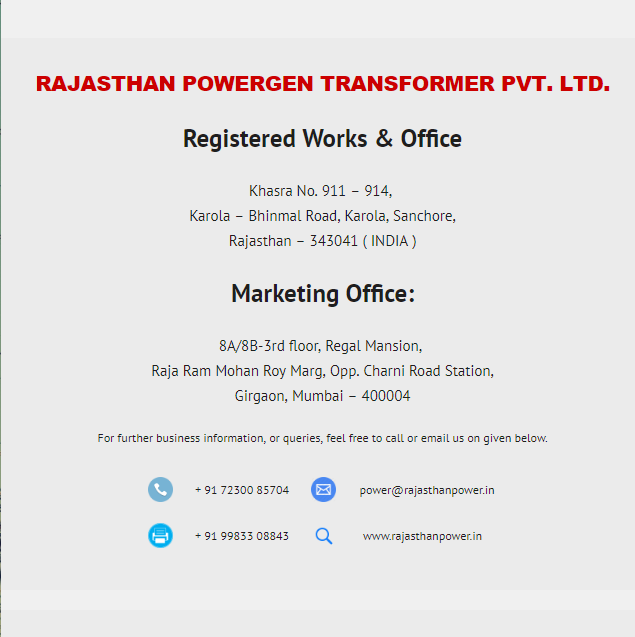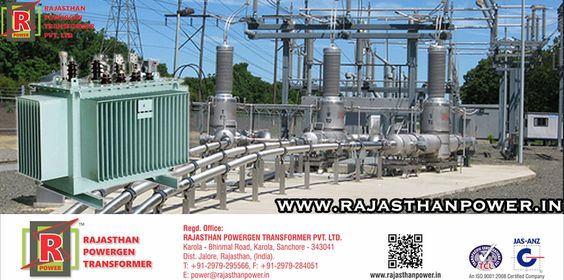For all those who want to make their career in power and energy sector, the leading transformer manufacturer in India, Rajasthan Powergen is here with some transformer related questions and answers to help aspirants fight the competition.
Why is the Power Factor of the transformer very low during no load?
Transformers draw high excitation current from the primary winding which magnetizes the path during no load. Basically, there are two components found in current flowing through the transformer i.e. in phase current which is in phase with the applied voltage and the magnetizing current which has a quadrature (90°) to the applied voltage. Thus, during no load condition excitation current in transformer usually comprises of magnetizing components of the current which provides a magnetic field to the transformer circuits, which is Inductive nature. Due to this Inductive nature of load, during no load, the power factor of transformer is within the range of .1 to .2
![]()
What will happen if transformer will get DC supply?
No back emf will be induced in the transformer when DC supply will be given to the primary winding of the transformer. Back emf is of great importance as it helps in limiting current usually drawn by the machine, and thus, in the absence of this back emf, transformer pull a great amount of current which is sufficient enough to burn the primary winding of the transformer. Thus, DC Supply is not beneficial for the transformer.
What is the maximum efficiency of the power transformer and distribution transformer and at what power they are designed?
Maximum efficiency is obtained when copper losses are equal to the core loss at an undetermined load factor (α). For transformer copper losses along with load factor varies based on the loading whereas core losses remain same. For particular load factor along with equal copper and core loss transformer with efficient transformer is designed. Thus, below given equation states that for maximum efficiency it is necessary to have core loss equivalent to the copper loss.
PCore loss = α2 X PCopper loss
Power transformers are designed to give maximum power at full load. Power transformer provides bulk power in generating stations whereas in other sub stations the power does not vary in an entire day and thus, delivers a full load. So, the maximum efficiency offered by the distribution transformer is 50% of the rated full load. Thus, power transformers are designed to give full load.
State the conditions required for the parallel operation of two transformers.
The conditions for the parallel operation of two transformers are as followed:
• Both the transformers should have same phase displacement.
• Both the transformers must have same phase sequence.
• Both transformers must have per unit impedance.
• Both the transformer must have same polarities to avoid short circuit.
• Both the primary and secondary winding of the two transformers must have the same voltage rating.
What is the use of silica gel in transformer?
Air enters into the transformers. This air comes in contact with the hot transformer oil present in the conservator and heat is removed by convection. The properties of the transformer oil get destroyed if the air containing moisture enters inside the transformer. Silica gel helps in removal of moisture present in the transformer. Thus, silica gel crystal is used in breather in order to remove moisture present in the air. Without moisture, silica gel is blue in color but after absorbing moisture it turns into pink color.
These are some of the questions and answers by the transformer manufacturer in India, Rajasthan Powergen that will be helpful for candidates in their preparation for getting job in energy and power sector.







